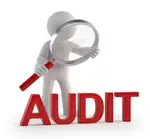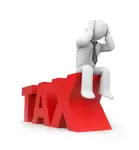Understanding Input Tax Credits for Small Business In Canada
How To Claim Input Tax Credits in Canada - Line 108
By L.Kenway BComm CPB Retired
This is the year you get all your ducks in a row! Start by starting.
Published March 21, 2024 | Revised March 30, 2024 | Edited May 13, 2024
WHAT'S IN THIS ARTICLE
Introduction | Basics | What are ITCs | Eligibility | Small Supplier | Calculate Credit | Claim ITCs | Common Mistakes | Special Rules | Impact On Small Business | Key Takeaways
NEXT IN SERIES >> Financial Impact of Cancelling Your GST HST Account
 Receiving cash back from submitting your input tax credits to CRA are a delightful experience!
Receiving cash back from submitting your input tax credits to CRA are a delightful experience!Navigating the financial waters of operating a small business in Canada can be complex, particularly when it comes to understanding various tax credits and benefits. Among the most significant of these is the Input Tax Credit (ITC), a great help meant to benefit most small businesses.
Understanding ITCs is critical for small businesses to potentially lower their overall tax burden, as they can offset the GST HST paid by the business. Misunderstanding or misusing ITCs can lead to penalties, so comprehension of the rules is important.
This article will present you with useful information about ITCs, qualification criteria, and the procedures for claiming these credits.
Understanding GST HST: The Basics Of Canadian Sales Tax System
The Goods and Services Tax (GST) and Harmonized Sales Tax (HST) are indirect, value-added taxes charged on most goods and services sold in Canada. Small businesses, as suppliers of goods and services, are required to charge, collect, and remit these taxes to the Canada Revenue Agency (CRA) when they hit the annual threshold of $30,000 in worldwide sales.
Input tax credits play a central role in this tax structure by allowing businesses to recover the GST HST paid on purchases and expenses related to their commercial activities. It may be to a business's advantage to volunteer for GST HST registration prior to meeting the threshold so they can claim their ITCs.
Defining Input Tax Credits: What Do They Mean For Your Small Business?
Input Tax Credits, or ITCs, are a tax mechanism for small businesses in Canada that allows for the recovery of the Goods and Services Tax (GST), or the Harmonized Sales Tax (HST), paid on business-related purchases and expenses.
In general terms, Input Tax Credits in Canada are a refund of the GST HST that businesses pay for goods or services linked to their commercial operations.
When businesses purchase supplies or services, they pay tax upfront, which they later reclaim through ITCs. Essentially, ITCs avoid the cascading tax effect of a tax on a tax, making sure that the end consumer bears the tax burden, not the businesses involved in the production and distribution process.
In simpler terminology, ITCs are credits registered businesses are allowed to claim to recover any of the HST GST paid on business purchases. This means GST HST is paid only by the end consumer as your GST HST ITCs neutralize the tax for your business.
A few things to note:
- You must be registered to claim input tax credits.
- You cannot recover ITCs incurred prior to HST GST registration. This is where good tax planning comes in.
By voluntarily registering your business while you are in the startup stage, you will be able to recover your startup costs. If you wait to register, you have lost out on recovering your ITCs related to your startup costs. CRA does not allow (in most cases - there are always exceptions as I said earlier) you to retroactively register.
Consider this - By not being an HST GST registrant, you do lower your prices to your customers (hey they gotta love that) by 5% (our current GST rate) but hold on ... you also increase your cost of doing business 5% by not being able to claim the ITC as a non-registrant ... hmmm ...
There is the disadvantage that once HST GST registration occurs, you will have to track the GST HST collected and paid out. But I think this disadvantage is offset by the reduction in your total taxes paid. You also have the option of selecting the Quick Method to reduce your paper work and, for some businesses earn a profit from filing.
An added benefit of HST GST registration - it makes your business look more credible and legitimate. Remember, GST HST is tax neutral to registered businesses. The customers that will be most affected by your decision to charge HST GST are retail customers. If most of your competitors are charging HST GST, then these retail customers should be neutral to you being an HST GST registrant and charging HST GST.
Eligibility for Input Tax Credits
Does Any Business Get To Claim ITCs?
Securing input tax credits isn't automatic or guaranteed. Specific criteria must be met to qualify.
First, your business must be GST HST registered. However, if you expect revenues of less than $30,000 annually, you are not obligated to register. Nonetheless, registration permits you to receive ITCs on your business expenses right away. Operating without GST HST registration means you eat (expense) any sales tax on your business purchases. It also means you are not permitted to add GST HST to your sales invoices.
Second, your business expenses must be reasonable and directly related to your income-generating operations and activities to qualify for an ITC. Expenses termed as capital personal property (I.E., moveable depreciable property that is eligible for CCA), legal fees, home office expenses, vehicle expenses, and operating expenses (with specific exclusions) generally qualify, provided they are intended for business use and not personal lifestyle expenses.
Third, keep in mind that GST HST must have been paid or is payable on the business supply. ITCs are only claimable within the first four years (with some exceptions that are unlikely to apply to a small business) following the fiscal year in which they apply. So don't get upset if you miss claiming an input tax credit on your CRA return. You can claim it on the next return as long as it is within the four year window. I know receipts get lost then found and it's not always possible to claim the ITC in the current period. Wherever possible, make it a habit to claim the credit as soon as possible.
Lastly, you must have supporting documentation to be eligible to make an input tax credit claim. CRA has very specific rules on what the invoice or receipt should contain and how it should be presented. Learn these rules otherwise a GST HST audit could leave you with a hefty tax bill if ITCs are disallowed due to improper documentation.
Disqualified Expenses: When Can't You Claim An Input Tax Credit?
As a small business owner in Canada, not all your purchases or expenses qualify for claiming Input Tax Credits (ITCs). Some of the expenses or purchases where you cannot claim ITCs include:
1. Purchases where you don't have all the supporting documentation that include key information such as supplier's name or GST HST registration number, date of supply, total amount paid or payable, and the GST HST paid.
2. Certain capital property like goodwill, inventory for certain supplies of financial services, and property meant for providing exempt supplies.
3. Personal or non-business purchases and expenses.
4. Leisure activities or membership costs, unless directly related to your business.
5. Items on which tax was not originally applied, such as those purchased from a small supplier not registered for GST HST.
6. Certain costs related to company-owned vehicles, depending on business-use portion and other conditions.
This is not an exhaustive list, the rules can be complex, and exceptions could apply. So I'll say it again, it's always recommended to consult the CRA website or a tax professional for comprehensive information and advice suited to your specific situation.
What Is A Small Supplier?
Numbers matter regarding your ITC claims. If your business' total taxable supplies were $30,000 or less in the previous four quarters, you are considered a small supplier.
As a small supplier, you can elect the Quick Method of Accounting for GST HST, reducing the amount of GST HST you have to remit. However, it's crucial to note that you must file an election with CRA to use this method and understand the Quick Method largely limits your ability to claim ITCs. It may or may not be advantageous for your business.
There are two other filing options: the regular method and the simplified method.
 This is the year you are going to get all your ducks in row and file your GST HST reports on time. You are aiming for the habit of consistency not perfection.
This is the year you are going to get all your ducks in row and file your GST HST reports on time. You are aiming for the habit of consistency not perfection.How to Calculate Input Tax Credits in Canada
ITCs are calculated by adding up the total GST HST paid or payable on eligible expenses, which you then subtract from the GST HST collected from your customers.
If the ITCs are more than the GST HST collected, you may receive a refund from the CRA. If they are less, you remit the reduced amount of GST HST collected to the Receiver General of Canada when you file your return with the CRA.
If you use an accounting platform like QuickBooks® Online Canada, the sales tax module tracks and calculates your input tax credits with ease. All that is required is you develop the habit to keep up with your data entry. QuickBooks® is on the cutting edge with its use of technology. It has many automation features that have made this a less burdensome administrative task. Set aside a regular time in your schedule to do your bookkeeping, or hire a bookkeeper to do it for you. You are aiming for the habit of consistency not perfection.
Claiming Your ITCs: An Easy Guide To Get You Started
Let's demystify how to claim input tax credits in Canada.
To claim ITCs, businesses must fill out a GST HST return, detailing the total GST HST collected and ITCs claimed. Documentation, like receipts or invoices showing GST HST paid, must be kept for six years to support all ITC claims.
GST HST Return
Calculation Of Your Net Sales Tax Due
GST/HST Collected on Sales (line 105)
- GST/HST Input Tax Credits (line 108)
= GST/HST Amount to Remit to CRA (line 109)
A negative number on line 109 means you will be receiving a refund.
Assuming you are a GST HST registrant, here's a simplified way of how the process your ITCs:
- When you incur a business expense, you pay GST HST, which you can claim as an ITC on your GST HST return. Only GST HST paid on the business-use portion of the expense can be claimed. I.E. If there is a personal use component, it must be removed prior to claiming the ITC.
- To claim ITCs under the regular method, include the GST HST paid on line 108 of the return for the reporting period when the tax becomes payable.
- Make sure that you have documentation (like purchase invoices or receipts) issued to the legal name of your business that clearly shows the GST HST you have paid.
- Become knowledgable so you are able to consider any special rules that may apply (a) given the price of the capital property, and (b) how you use the property. (See special rules below.)
AUDIT READY
Remember, all invoices and receipts must meet CRA's very specific criteria as per subsection 169(4) of the Excise Tax Act (ETA) to ensure certain expenses are not disallowed during an audit. The best way to avoid denial of ITCs is to make sure all your supporting documentation is in order.
More >> Exceptions: Be aware of subsection 169(5) exceptions to CRA GST HST invoicing requirements.
Common Mistakes Small Businesses Make with ITCs
Common mistakes include:
- not understanding which expenses qualify for ITCs;
- not keeping accurate or adequate records to support the claim; or
- not correctly filling out the GST HST return.
AUDIT READY
Often there are sales tax issues are around restricted input tax credits. Two common issues:
- Neglecting to limit (restrict) meals and entertainment expenses to 50% because a company forgot to do their year-end adjustment.
- ITCs are NOT allowed on dining or recreational facility membership fees or club dues. Learn about the exception.
Reporting of GST/HST can be a problem during an audit. Often the wrong amounts are reported on the GST/HST return. Don't hesitate to track sales tax collection, input tax credits in separate accounts to reduce errors or use a platform like QuickBooks® Online Canada which has a sales tax module that does just that.
By ensuring a good understanding of ITCs, implementing meticulous record-keeping, and seeking advice when necessary, businesses can avoid these pitfalls.
Complexities and Special Rules Surrounding ITCs
Be alert for certain situations that can add complexity to claiming ITCs, such as when dealing with:
- capital property;
- changes of use; or
- public service bodies.
Special ITC rules may apply to specific industries, like real estate or financial services, so it's essential to understand these nuances.
More >> Learn about the special 90% rule and place of supply rules.
How to Claim ITCs on Capital Property
Caution - Talk to Your Accountant
Please use the information in this section more for talking points with your accountant ... so you have a better feel for what kind of information you are seeking. Your accountant will customize advice specifically for your situation. Think of it like this ... Having a map BEFORE you enter the forest is so much better than getting lost in the forest!
Capital property refers to more substantial, long-term assets a business purchases, such as buildings, machinery, computers, or vehicles. Much like standard ITCs, the GST HST paid on capital purchases can be claimed back, provided the property is used for commercial activities.
The claiming of ITCs for capital property in Canada entails a detailed process. Let's use the business use of a personal vehicle as an example. Specific conditions apply. Here's a general guideline:
1. Eligibility: The first step is to determine if you are eligible to claim an input tax credit. In Canada, you must be a GST HST registrant and the vehicle should be used in commercial activities. Personal use of the property doesn't qualify for ITC.
2. Allocation of Use: The ITC claimed should be proportional to the extent of the vehicle's use in commercial activities. If the vehicle is used 50% for personal use and 50% for commercial use, then you can only claim ITC for the 50% used in your business.
3. Capital Personal Property: Since the personal vehicle is considered a capital property, you need to calculate the ITC over the life of that property (the vehicle in this example). You must allocate it over several years rather than claiming it all in the purchase year.
Now, let's talk about the method to calculate the ITC of capital property. We'll continue using the business use of a personal vehicle as an example.
The ITC is calculated as 5/105 of the Capital Cost Allowance (CCA) that you deduct each year for income tax purposes. Essentially, to calculate the ITC, you first, deduct your CCA for income tax purposes and then calculate your input tax credit based on that amount.
Example: If you have $3,000 of CCA for your vehicle in a year, your ITC for that year would be (5/105) x $3,000 = $142.86.
Remember, you can't claim an ITC on the provincial part of the HST if your property or service is subject to the provincial restriction on ITC claims.
There can be complexities when claiming ITCs on capital property, such as adjustments that need to be made over time if the percentage of business-use changes. It is highly recommended to consult with a tax professional to ensure all guidelines are correctly followed and the maximum ITCs are claimed.
Please note that the above is only a high-level overview and small business owners should familiarize themselves with the Canada Revenue Agency's rules and regulations.
Impact of Change in Use on Input Tax Credits
Be aware, a change in use can affect how a small business owner in Canada claims input tax credits (ITCs). Here's a basic explanation:
The CRA uses a concept called 'Change-in-Use' rules. These rules apply when the use of a capital property changes from commercial to personal use, or vice versa.
1. Commercial to Personal Use: If a capital property initially used for commercial purposes is subsequently used for personal purposes, you may be required to repay a portion of the ITCs you initially claimed. This is essentially seen as a sale of the property from your commercial entity to you personally, and the business would be required to repay the corresponding ITCs.
2. Personal to Commercial Use: Conversely, if a personal property is subsequently used for commercial purposes, you may be eligible to claim additional ITCs. This would be calculated based on the fair market value of the property at the time of change and the extent of its use in commercial activities.
It's important to deal with the effect on input tax credits when there is change in use of a property. These adjustments are particularly important when it comes to capital property like real estate, as the use of a property can change significantly over time.
It's essential to understand that this is a simplified explanation and the actual calculations can be complex. The CRA provides detailed guides and resources on their website which could be helpful.
Special Rules For Public Service Bodies ITCs
Dealing with certain public service bodies (PSBs) can affect how you, as a small business owner in Canada, claim Input Tax Credits (ITCs).
In Canada, certain PSBs, such as municipalities, universities, public colleges, school authorities, hospitals, charities, and non-profit organizations have special GST HST rules that apply to them. These rules can impact the amount of GST HST that these entities can claim as a rebate, which in turn can affect how small businesses like your own claim ITCs.
For instance, PSBs are usually not eligible to claim full ITCs on their purchases and expenses; instead, they are entitled to claim rebates for a portion of the GST HST. It means that sometimes, if you supply goods or services to such organizations, you might need to charge them tax at a rate less than the full GST HST rate, which would restrict your claim for ITCs.
However, these rules can be complex and depend heavily on specific situations. I know I sound like a broken record but please refer to CRA's detailed guides just to be safe and to ensure that you are correctly claiming ITCs. It's always wise to seek advice from a professional the first time you implement something.
The Impact of ITCs on Small Businesses
Proper use of ITCs can result in substantial tax savings, positively impacting a small business's bottom line. More importantly, ITCs can form part of an efficient tax management strategy, potentially reducing administrative burdens and improving cash flow.
Input tax credits are a valuable tool for small businesses in Canada. With the right understanding and effective management, they can significantly contribute to tax savings and better financial health for businesses.
Summary - Key Takeaways
1. Understanding ITCs: Input tax credits (ITCs) are a tax recovery mechanism for small businesses in Canada, allowing them to reclaim GST HST paid on business-related purchases and expenses, thus helping to lower their overall tax burden.
2. Claiming Input Tax Credits: To claim ITCs, businesses must be GST HST registered, expenditures must be business-related, and businesses must have substantiating documentation.
3. Ineligibility: Not all expenses qualify for ITCs. Items like personal or non-business purchases and certain capital property are typically ineligible. Of course, expenses with no supporting documentation do not make the cut.
4. Importance of Compliance: Misunderstanding or misuse of ITCs can lead to penalties, making correct documentation and meeting compliance filing deadlines essential.
5. Special Cases: Unique rules apply when claiming ITCs on capital property and when a change in use of property occurs. Additionally, different industries, like real estate and financial services, might have unique ITC rules.
6. Impact on Small Businesses: Effectively managed, ITCs can significantly contribute to tax savings and enhance the financial health for businesses.
Please remember, this is a complex subject and while this blog post provides a comprehensive overview, it is not exhaustive. For specific, personalized advice, it's best to contact a tax professional or the CRA directly.
References: The information shared in this article can be found directly from the Canada Revenue Agency's website. A useful article was CRA Publication GST/HST memorandum 8.4 Documentary Requirements for Claiming Input Tax Credits.








